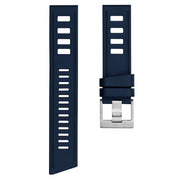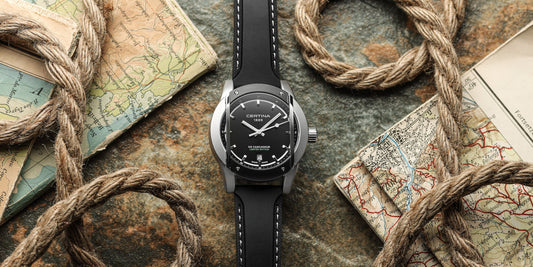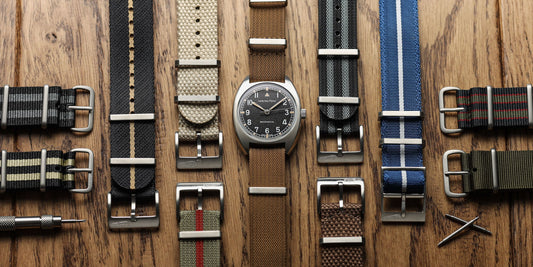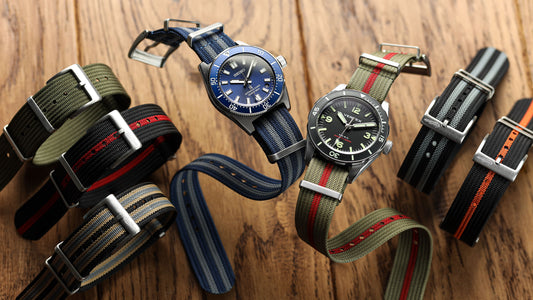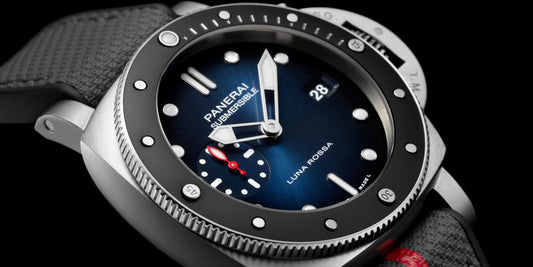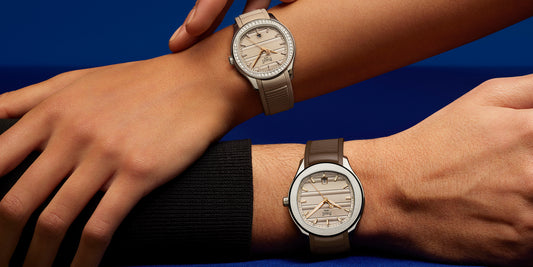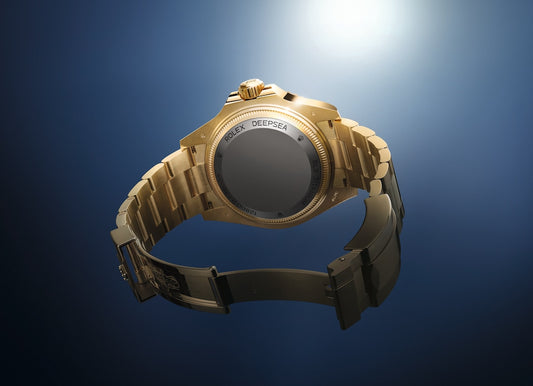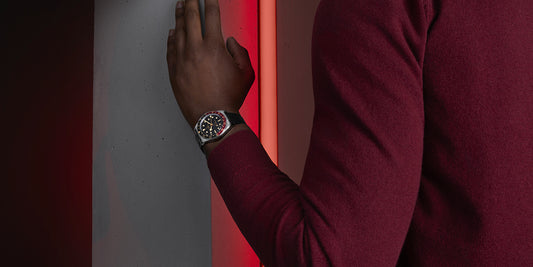At the beginning of January, the Content And Communications Manager from Farer Watches dropped into the WatchGecko studio to film an interview.
Fortunately for us, he came armed with a large Peli Case full of watches in every style and colour—the entire Farer portfolio. Of particular note were two new Chrono-Contempos, which headline on their website. These watches take traditional chronographs in a different direction and are inspired by two famous streets in London.
Some background
 Farer Chrono-Contempo Chalcot - Credit WatchGecko
Farer Chrono-Contempo Chalcot - Credit WatchGecko
We forget that Farer (pronounced "Fairer") has only been with us since 2015, so our opening gambit during the interview was how they managed to create such an impressive portfolio in such a short time. Unsurprisingly, the answer was an amazing creative team and hard work. This London-based watch company is driven by a distinctly British horological passion, which we (almost) define as traditional artisan craft with a contemporary twist. Combine this with a love of all things travel-based. The name is a constriction of Wayfarer, so we have an excellent foundation for creating less ordinary tool watches.
The combination of British design and Swiss craftsmanship ensures that the products are as capable as possible, and to illustrate confidence in manufacturing, they all come with a 5-year guarantee. What's also refreshing about their current designs is their universal nature, which is noted on the dial. Farer see no such thing as men's or ladies' watches. They make contemporary styles in a broad palette of colours that appeal to the widest demographic of buyers.
2023 Chrono-Contempo
 Farer Chrono-Contempo Portobello - Credit WatchGecko
Farer Chrono-Contempo Portobello - Credit WatchGecko
The two available models are named after famous streets in London synonymous with vibrant colours. The Chalcot and Portobello. You'll see why they chose these names if you Google the roads.
Both watches are a three dial tri-compax design set aside from the norm by including a big-eye minute dial. The range has bidirectional ceramic 12-hour bezels, which can be used to monitor a second time zone and, depending on your choice, are either nicely integrated into the watch or the main colour element.
The watch proportions are neat, which bodes well for sales. The dimensions are on-point with a diameter of 38.5mm, lug to lug of 43.7mm and a thickness of 13.4mm. A standard design element is upturned ski slope lugs, which provide visual interest and a nicely alternate shape on your wrist. Textured dials maintain aesthetic appeal across the entire watch face.
 Farer Chrono-Contempo Chalcot - Credit WatchGecko
Farer Chrono-Contempo Chalcot - Credit WatchGecko
Inside both models beats a manually wound Swiss Sellita SW510M Elaboré movement. This visually impressive calibre is perfect for a watch designed without compromise. It benefits from 23 jewels, Incabloc shock protection and a functional 63-hour power reserve. Thankfully Farer has fitted as standard a sapphire exhibition case back so that you can admire the decorated bridge and blued screws.
Both watches can be further individualised through Farer's online strap configurator. With the choice of leather St Venere in multiple colours or integrated rubber, you can personalise your Chrono-Contempo. Additionally, they offer a free engraving service for that unique name or message.
The Chalcot




The chrono-minute dial on the Chalcot is white to contrast with the textured mint green of the watch face. Polished batons with a single numeral 12 lend sophistication. All elements are filled with BGW9 Super-LumiNova with the hour and minute hands in mint green lume to match the dial. The chronograph's seconds hand is fashioned in bright orange. A copper insert in the crown is a much appreciated extra design, and on this particular model, the ceramic bezel is blue to match the strap, sub-dial hands, and minute track.
The Chalcot name hails from Chalcot Square in London, which is very close to Farer's office. The area is the inspiration for the mint colour dial as the famous terraced houses of The Square are painted in similar bright pastel colours.
The Portobello




The Portobello is predominantly blue with a striking accent in orange. The dial has a grid pattern, which Farer liken to a "chocolate bar". All sub-dials are the same colour on the Portobello, which makes it an altogether more subdued but no less sophisticated package than the Chalcot. The navy dial is colour-matched to the rubber strap we had on test, which adds impressive 360-degree aesthetics. Front and centre of the Portobello is the bidirectional rotating bezel in orange ceramic.
As with its sibling, the name takes inspiration from Portobello Road in London, which is also famous for its multicoloured buildings.
Technical Specifications:
- Brand: Farer
- Model: Chrono-Contempo Chalcot and Portobello
- Price: £1,675
- Material: 316L stainless steel
- Movement: Sellita SW510M Elaboré Hand wound
- Complications: Hours, minutes, seconds, tri-compax chronograph
- Crystal: Sapphire crystal with anti-reflective coating front and back
- Size: 38.5mm
- When the reviewer would personally wear it: The elevation of design and colour make the Chrono-Contempo a statement watch. I would wear it accordingly. It would look good in Business Class flying across the Atlantic.
- A friend we’d recommend it to first: Someone who wants a chronograph but lives a life less ordinary.
- Best characteristics of the watch: The attention to detail. A smartly selected movement that looks beautiful, and the bronze crown insert stand out.
- The worst characteristics of the watch: Pastel colours on the dials won’t be to everyone’s taste.









